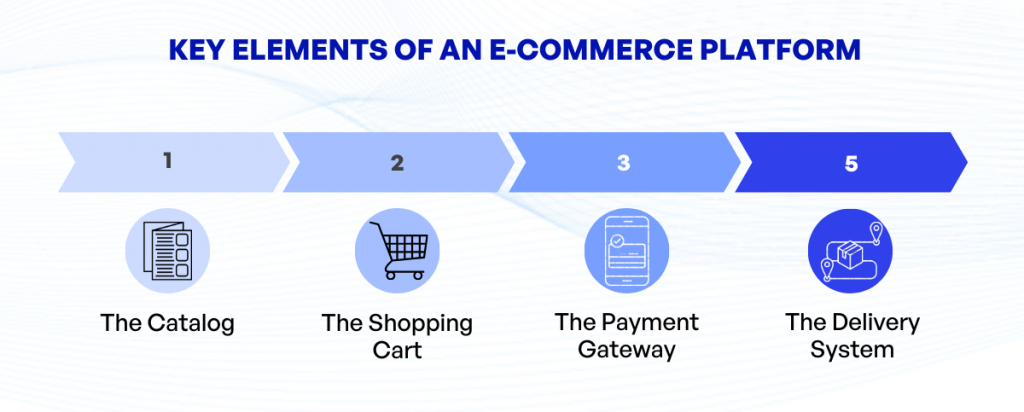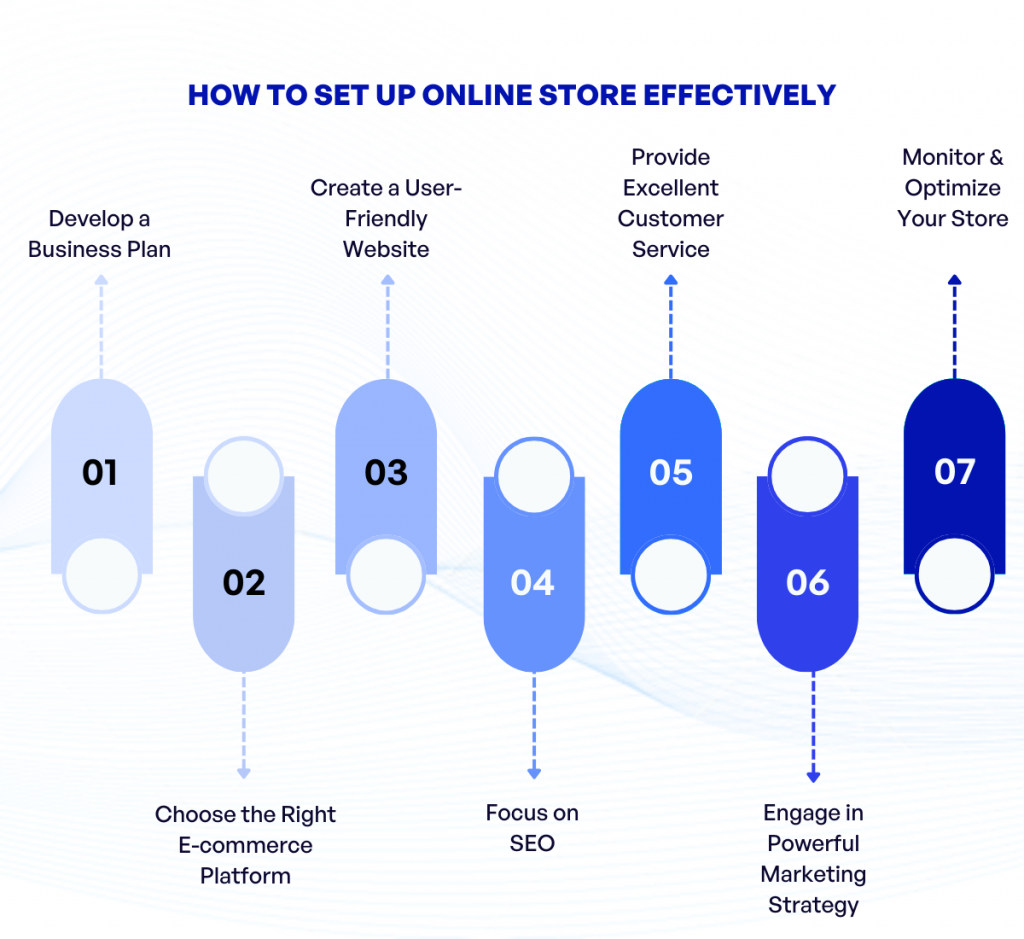
Did you know that by 2023, e-commerce revenue is projected to reach upwards of $6.5 trillion worldwide? If you’re a startup founder aspiring to venture into the trendy online retail space, you might want to consider building your own e-commerce platform. This guide will provide you with an insight into the basics that will help you navigate this promising journey.
The term ‘e-commerce’ refers to the buying and selling of goods or services using the internet, and the transfer of money and data to execute these transactions.
Shopify
Whether you plan to sell handmade crafts, tech gadgets, or gourmet food, setting up an e-commerce platform can be a powerful tactic to reach more customers and scale your business. But where do you start, and what do you need to know?
1. Understanding E-commerce
E-commerce, short for electronic commerce, marks the buying and selling of goods and services over the Internet. In the modern age, it’s become an integral part of almost every retail business strategy and a mainstay of global consumption. From start-ups to established companies, businesses are jumping on the e-commerce bandwagon – and if you’re here, it seems like you’re ready to join them!
But why exactly has e-commerce gained such traction? The answer lies in the benefits it offers. Here are a few:
- E-commerce provides a wider customer base than a physical store. With the internet, you’re no longer limited by geography
- Store hours become non-existent. Customers can shop at their convenience, be it day or night.
- It reduces business costs. There’s no need for a physical location, thus eliminating associated expenses like rent and utilities.
- It provides plentiful customer data, enabling targeted marketing and personalized experiences.
The alluring benefits e-commerce brings aren’t without challenges, but the key to overcoming these lies in knowledge, preparation, and a robust platform. Building an e-commerce platform might seem daunting, but with a solid understanding of the key aspects and phases, it can be a rewarding journey.
Moving ahead, let’s delve deeper into the world of e-commerce and break down the process into its most basic elements. To build a successful e-commerce platform, there are important areas you’ll need to focus on – from choosing the right platform and establishing the key elements to ensuring the best user experience.
2. Key Elements of an E-commerce Platform

So, you’ve understood the essence of e-commerce and its potential. Excellent! Now, let’s journey into the heart of your soon-to-be e-commerce platform. Without the correct pieces, an engine can’t run. Similarly, an e-commerce platform requires some critical elements to function as an efficient ‘online selling machine’. Let’s shed some light on these elements.
2.1. The Catalog
Your catalog, essentially, is your online product shelf. It’s where your customers will browse, compare, and decide on the offerings. A catalog needs to be organized, detailed, and user-friendly.
- Product Information: Include clear images, descriptions, prices, and other relevant product details. Remember, a customer’s informed decision greatly reduces the chances of returns and disappointments.
- Search and Filtering: Offer your customers the ability to search and filter through your catalog. This way, they can reach their desired product more efficiently.
2.2. The Shopping Cart
Once your potential customer has found what they’re looking for, they’ll add it to their shopping cart. A virtual shopping cart allows customers to accumulate their desired purchases as they continue browsing on your platform.
- Saving Functionality: Your shopping cart should offer the ability to save items for future reference. This feature encourages repeat visits and purchases.
- Edit Functionality: The ability to easily adjust order specifics such as quantity, color, or size in the shopping cart is crucial for a seamless shopping experience.
2.3. The Payment Gateway
The moment of truth in e-commerce: the transaction. This is where your platform accepts payment from customers. A secure, agile, and user-friendly payment gateway is a non-negotiable requirement for any e-commerce platform.
- Security: This ensures that your customers trust your platform with their sensitive payment information.
- Diverse Payment Options: Respecting the reality of diverse customer preferences is important. This means offering a variety of payment methods including credit cards, debit cards, mobile wallets, and other digital payment options.
2.4. The Delivery System
The final step towards completing an online purchase is the delivery. Ensuring a considerate and efficient delivery experience leaves a lasting impression on your customers.
- Tracking: Customers should be able to track the progress of their delivery in real-time.
- Options: Offering a variety of delivery options like ‘Standard’, ‘Express’, or ‘Same-day delivery’ caters to different customer needs and situations.
These are the critically instrumental elements of an e-commerce platform. Remember, a delightful customer journey from browsing to delivery can set your platform apart in this competitive e-commerce playground.
3. How to Set Up Online Store Effectively

Building an effective online store goes beyond simply choosing the right e-commerce platform. Your store’s success is predicated on careful planning, strategic decision-making, and precise execution. Here are some steps you can take to ensure your online store is set up effectively:
- Develop a Business Plan: Your business plan should give a comprehensive overview of your product, target audience, market analysis, marketing and sales strategy, and financial forecasts. It’s the blueprint for your online store, guiding its direction and growth.
- Choose the Right E-commerce Platform: Select an e-commerce platform that suits your business needs and budget. Different platforms offer various features such as customization options, built-in SEO, mobility, quick support, and more.
- Create a User-Friendly Website: Your website should be visually appealing, easy to navigate, and responsive. A complex or difficult-to-use website can deter potential customers.
- Focus on SEO: Search engine optimization (SEO) is essential for increasing your store’s visibility. Implement SEO strategies such as using relevant keywords, optimizing page load speed, and ensuring your website is mobile-friendly.
- Provide Excellent Customer Service: Stellar customer service builds trust and boosts customer loyalty. This can include having a clear return and refund policy, providing tracking information for orders, and responding quickly to inquiries.
- Engage in Powerful Marketing Strategy: Effective marketing is essential in driving traffic to your online store. Consider methods like social media advertising, email marketing, and content marketing.
- Monitor and Optimize Your Store: Regularly analyze your store’s performance using e-commerce analytics. Use those insights to refine your business strategies and improve your store.
In addition, understanding the consumer behavior behind online purchases can be an invaluable tool for optimizing your business. Remember to always place your customer at the heart of every decision you make. This will ensure that your e-commerce platform is not just an online store, but an engaging experience for all visitors.
4. Top E-commerce Platforms in the Market
When it comes to selecting an e-commerce platform for your startup, there are countless options available. However, the right platform depends on your specific needs, budget, and technical capability. Here we’ve outlined some of the top e-commerce platforms in the market for you to consider:
- Shopify: Known for its ease of use, Shopify is an excellent platform for beginners with little to no technical knowledge. It comes with a variety of templates, an extensive App Store, and strong customer support.
- Magento: Ideal for large-scale online stores, Magento is highly customizable and has a robust feature set. It does, however, require some technical knowledge or resources for setup and maintenance.
- BigCommerce: BigCommerce offers a large number of features with no transaction fees. It’s easy to use with great customer support, but it can be more costly than some other options.
- WooCommerce: An open-source platform built for WordPress, WooCommerce gives you complete control of your online store. It’s perfect if you’re already comfortable with WordPress.
- Medusajs: A relatively new platform that supports ‘headless’ e-commerce, allowing users to create high-performing, fully customized, and unique online shopping experiences. It’s an open-source platform, ensuring a growing, supportive community.
It’s essential to consider your options carefully before choosing an e-commerce platform. Keep in mind your products, the scale of your operations, your budget, and your technical resources. Once you’ve determined these, have a look at each platform, try their free trials, and decide which one would suit your business the best.
Note: Picking an e-commerce platform is like choosing a long-term business partner. Ensure that it aligns with your business model and can scale up as your business grows.
5. Trend of Headless E-commerce
Imagine a scenario where the front-end, customer-facing interface of your e-commerce platform could be completely disconnected but still flawlessly function with the back-end infrastructure like product management or payment processing. This decoupling is what defines “Headless E-commerce“, an emerging trend that is gaining momentum in the online retail world.
Let’s dive deep into why it’s drawing such significant attention and how it might just be the game-changer you need for your venture.
Headless e-commerce is strategy-focused and technology-agnostic, unlike typical e-commerce. It allows you to choose and customize every point of your customer journey, right from the user interface, and the checkout experience, introducing exciting customer engagement tools, up to integration with other platforms.
It essentially provides a separation between the presentation layer and the application layer allowing each to function independently. This leads to notable advantages:
- Increased Flexibility: Updates or improvements can be implemented on either the front end or the back end without disrupting the other. This flexibility is particularly valuable when striving for a consistent omnichannel strategy, for instance.
- Improved User Experience: With the power to customize every aspect of the platform, you’re more likely to create a user interface tailored to your customer needs. This can significantly improve the overall user experience which is a critical factor in online retail.
- Quick Adaptation: Trends in the e-commerce world change at an immense speed. Having a headless e-commerce platform allows you to adapt quickly, without having to rebuild your entire site.
However, a word of caution. It’s not a one-size-fits-all solution. This approach requires a more in-depth understanding of technology and maybe more resource-intensive initially. It might be ideal for certain types of businesses and scenarios, but not all.
Taking a step to adopt headless e-commerce is a significant business decision. Assess your company’s needs, digital maturity, and capabilities before you choose to go headless. Remember, the goal is to provide a seamless, superior shopping experience that drives growth and customer loyalty.
Note: Headless E-commerce is an exciting prospect and could be the future of online retail, but it’s still a nascent concept which means it comes with its own set of challenges. However, its potential to drastically improve flexibility, user experience, and adaptation speed can’t be ignored.
Having understood this, you might want to start exploring the possibility of headless for your platform and approach it with an open, yet cautious mind.
6. Conclusion
In conclusion, building an e-commerce platform is not just about selling products online. It involves creating a seamless shopping experience for your customers that combines functionality, aesthetics, and convenience. From cataloging your products to setting up a user-friendly shopping cart and secure payment gateway, every aspect needs careful planning and execution.
Given the rapid growth and increasing competition in the e-commerce space, it’s more crucial than ever to stay on top of trends and adapt to changes. The recent shift towards headless e-commerce is a perfect example, demonstrating how a flexible and robust online store can significantly improve customer experience and boost business growth.
If you’re a non-technical startup founder eager to venture into the online retail space, don’t let the complexities of building an e-commerce platform discourage you. There are plenty of tools available today to help you streamline the process, including various e-commerce platforms that offer ready-to-use features and user-friendly interfaces.
Remember: Successful e-commerce is not just about having a good product. It’s about incorporating your product into a broader online experience that engages customers and builds brand loyalty. So pay careful attention to every aspect of your e-commerce platform, from the design and functionality of your website to the payment and delivery systems. After all, every detail matters in turning a casual browser into a satisfied customer.
In the ever-evolving digital landscape, taking the time to understand the basics of building an e-commerce platform can give your business a significant competitive edge. So, get started on your e-commerce journey today!
If you have any questions about e-commerce, feel free to contact KVY TECH.


